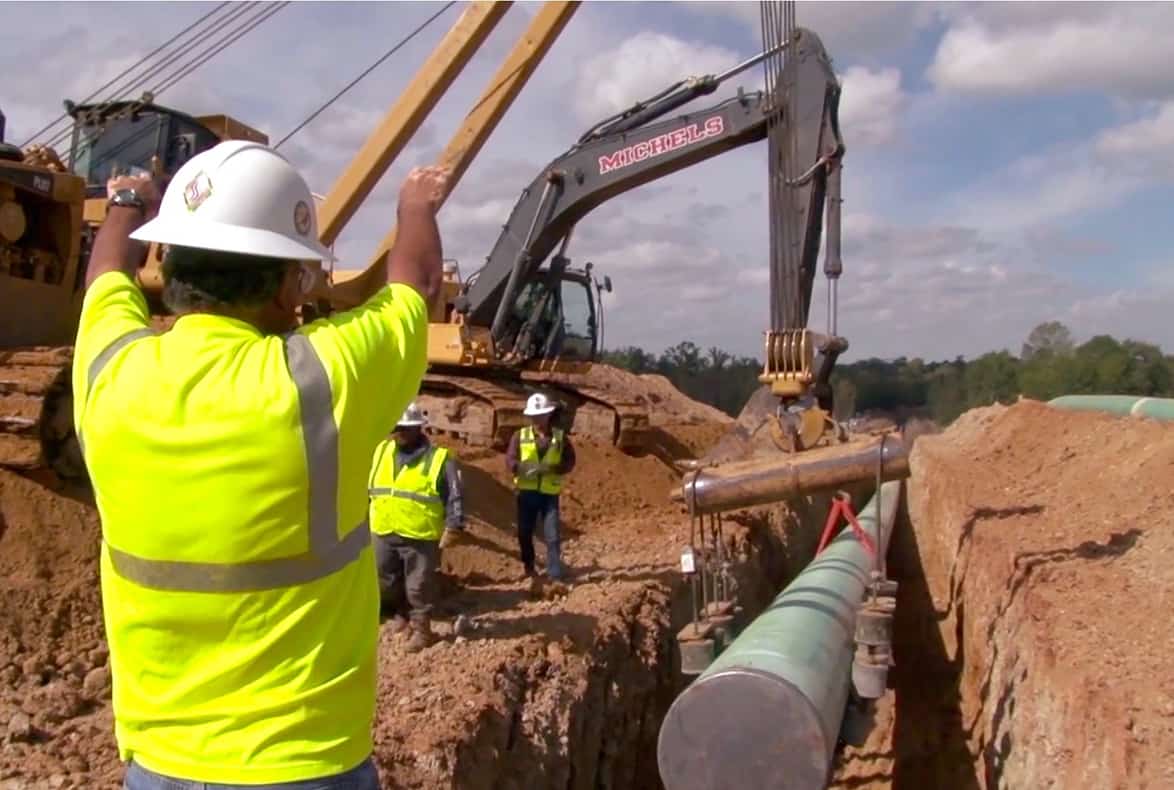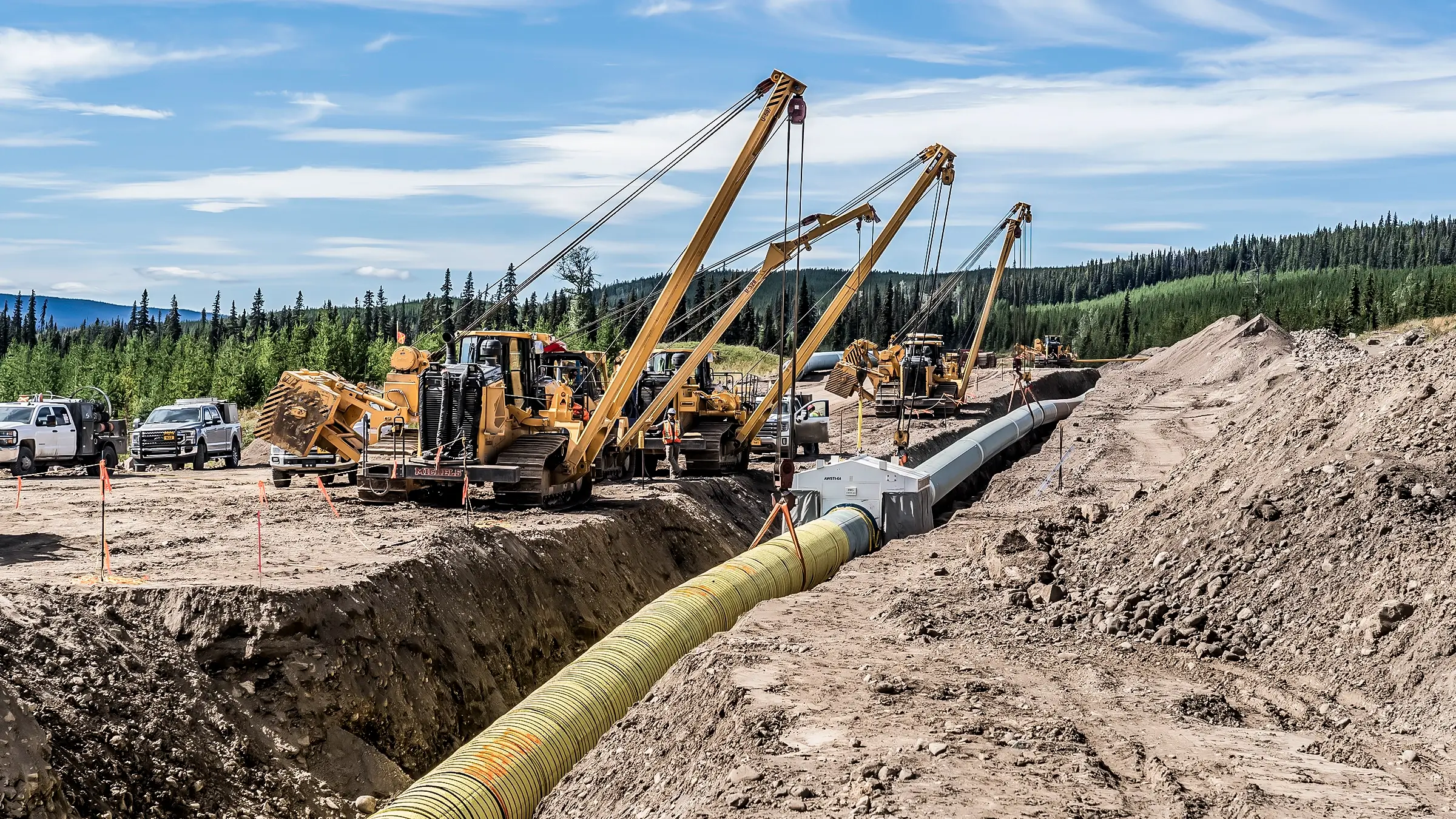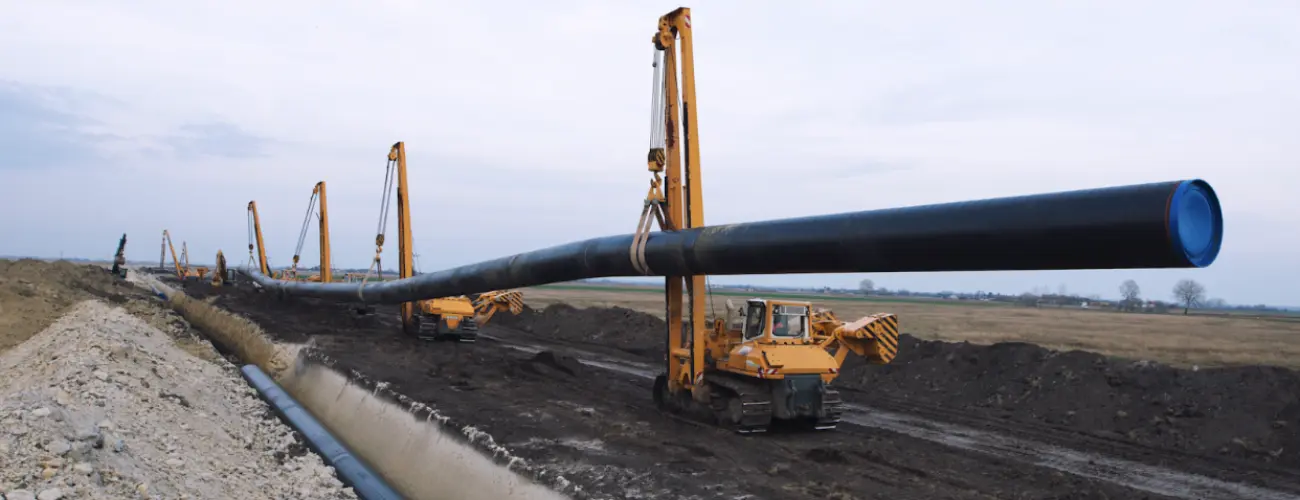Top Challenges Pipeline Construction Authority Manages Today
Changing Pipiline Construction: Innovative Techniques for a Sustainable Future
The landscape of pipiline construction is going through a considerable makeover, driven by the need for sustainability and efficiency. Emerging technologies, such as sophisticated materials and wise systems, present opportunities to decrease ecological effect while boosting functional integrity. The assimilation of environmentally friendly practices and area engagement is improving the typical approaches to framework development. The inquiry stays: exactly how can these advancements be properly executed to ensure not only the longevity of pipes but also the health and wellness of the ecosystems they go across? Discovering this crossway may expose essential insights for the industry's future.
Advanced Materials in Pipiline Construction
In recent times, numerous advancements in products science have considerably changed pipiline construction, boosting both durability and efficiency. The intro of high-performance products has actually played a critical duty in attending to the difficulties connected with traditional pipiline systems, including deterioration, wear, and leakage. The growth of innovative composite materials, such as fiberglass reinforced plastic (FRP) and carbon fiber compounds, has actually led to pipelines that are not just lighter but also exhibit premium resistance to environmental anxieties and chemicals.Additionally, the utilization of polyethylene (PE) and polyvinyl chloride (PVC) has gotten grip due to their exceptional rust resistance and convenience of installment - Pipeline Construction Excellence. These materials markedly lower maintenance expenses and expand the life span of pipes. Innovations in finishing modern technologies, such as fusion-bonded epoxy and progressed polymer coatings, supply extra security against corrosion and mechanical damages, making sure the stability of pipelines in harsh conditions.In addition, the assimilation of clever materials that react to ecological adjustments is arising as a promising development. These products can find anxiety and stress, supplying real-time information that can boost security and functional performance. By making use of these innovative materials, pipiline construction not only fulfills present sector criteria yet additionally advertises sustainability with minimized source intake and reduced environmental influence
Smart Modern Technology Integration
Smart modern technology integration is reinventing pipiline construction by boosting tracking, safety, and functional performance. The adoption of Net of Points (IoT) gadgets, expert system (AI), and progressed data analytics has actually transformed typical techniques, providing real-time insights right into pipiline systems. These innovations enable continual surveillance of pipiline problems, allowing early discovery of prospective concerns such as leakages or structural weaknesses.For circumstances, wise sensing units installed within pipiline infrastructure can pass on important information concerning pressure, temperature, and circulation prices, facilitating positive maintenance and reducing the risk of devastating failings. AI formulas evaluate this data to predict maintenance requirements, enhancing operational routines and minimizing downtime. This anticipating ability not just boosts the durability of pipiline systems however likewise significantly lowers functional costs.Moreover, the combination of drones and robot innovations into pipiline construction and maintenance supplies considerable benefits. Drones geared up with high-resolution cams and thermal imaging abilities can carry out airborne evaluations of pipelines, recognizing anomalies that may be undetectable from the ground. At the same time, robotic systems can be released in harmful environments, guaranteeing that human workers are kept out of damage's method while still executing crucial tasks.Incorporating smart innovation right into pipiline construction promotes a society of safety and effectiveness, eventually resulting in lowered environmental impact and enhanced project timelines. As sector stakeholders proceed to embrace these innovations, the future of pipiline construction appears significantly interconnected, data-driven, and resilient.

Eco-Friendly Construction Practices
As the concentrate on environmental sustainability magnifies, the pipiline construction sector is progressively taking on environment-friendly practices. This consists of the use of sustainable products, approaches to reduce environmental effect, and energy-efficient techniques that enhance general project stability. By executing these practices, firms can not only minimize their eco-friendly impact but also enhance their functional performance.
Sustainable Materials Use

Minimizing Ecological Impact

Energy-Efficient Methods
While pipiline construction naturally entails significant power consumption, adopting energy-efficient strategies can substantially minimize the general power footprint of the task. Carrying out innovative technologies, such as automated equipment and drones, improves procedures, lessens waste, and warranties accurate implementation, thereby decreasing energy use throughout construction.Utilizing sustainable materials, such as recycled steel and low-carbon concrete, additional boosts power effectiveness. These products not only lower the energy required for production however also lower the general environmental influence of the pipiline. Furthermore, maximizing transportation logistics by making use of regional distributors and lessening transport ranges can considerably cut down fuel wikipedia reference consumption.Incorporating renewable resource resources into construction procedures is another important approach. Utilizing solar-powered tools and generators can lower dependence on fossil fuels, promoting a greener construction site.Moreover, workforce training and education on energy-efficient practices can lead to more conscientious decision-making on-site, fostering a culture of sustainability. By integrating these energy-efficient techniques, the pipiline construction industry can not only decrease its carbon emissions but additionally established a criterion for future tasks, straightening with worldwide efforts towards an extra sustainable framework.
Lessening Ecological Effect
Reducing ecological impact during pipiline construction is vital for sustainable development - Midland Pipeline Construction Authority. This can be attained with the adoption of environmentally friendly materials, the execution of sophisticated trenchless technology, and the application of environment preservation approaches. By focusing on these vital locations, the sector can substantially decrease its eco-friendly footprint while preserving functional performance
Eco-Friendly Products Adoption
As the pipiline construction sector deals with raising scrutiny over its ecological impact, the fostering of environment-friendly products has become a pivotal method for reducing environmental influence. By integrating lasting sources right into construction processes, firms can considerably lower air pollution, preserve natural deposits, and boost the overall sustainability of their projects.Innovative products such as recycled plastics, bio-based compounds, and low-carbon concrete are being explored to replace conventional choices that typically add to environmental deterioration. For circumstances, recycled plastics not only minimize waste yet additionally provide durability and versatility, making them suitable for numerous pipiline applications. Bio-based compounds obtained from eco-friendly sources use a lower carbon footprint compared to conventional materials.In addition to product selection, companies are increasingly focusing on life cycle analyses to examine the ecological effects of their selections. By assessing the whole life process-- from removal to disposal-- organizations can make informed choices that straighten with sustainability goals.Ultimately, the dedication to green materials is not merely a trend but a required evolution within the pipiline construction sector. Accepting these lasting techniques promotes a much more accountable technique to facilities advancement, paving the way for a greener future.
Advanced Trenchless Modern Technology
How can advanced trenchless modern technology reinvent pipiline construction? This cutting-edge approach lessens ecological effect by considerably decreasing surface disturbance throughout installation. Traditional pipiline construction techniques typically call for comprehensive excavation, bring about environment destruction, soil disintegration, and enhanced sedimentation in nearby water bodies. In comparison, trenchless techniques, such as straight directional exploration (HDD) and pipeline bursting, allow for the setup of pipelines with marginal ground disturbance.These techniques include producing a borehole underground, enabling the setup of brand-new pipes without the need for big trenches. As a result, progressed trenchless modern technology not just preserves existing landscapes however additionally reduces the carbon footprint connected with hefty equipment and transport. In addition, these strategies can be executed in city areas, where area is restricted and the possibility for ecological damage is heightened.Furthermore, trenchless modern technology is adaptable to various soil problems, making it a versatile service for different geographical contexts. By integrating innovative trenchless techniques into pipiline construction methods, the market can lead the way for even more sustainable development, making sure that facilities satisfies contemporary needs while preserving the stability of the environment.
Habitat Conservation Techniques
Sustainability in pipiline construction depends upon effective environment preservation strategies that prioritize ecological honesty. These strategies are crucial in reducing the eco-friendly impact associated with pipiline projects, ensuring that neighborhood wild animals and ecosystems are guarded throughout the construction process.One vital method includes carrying out complete environmental impact analyses (EIAs) before project initiation. EIAs recognize delicate habitats and species that might be impacted, enabling construction teams to develop tailored reduction plans. Executing buffer zones around important habitats can significantly decrease disruptions, offering a shelter for wildlife throughout construction.Another effective strategy is the use of directional exploration and other trenchless modern technologies, which minimize surface area disruption by permitting pipelines to be set up below delicate areas, such as wetlands and waterways. This technique not just safeguards breakable ecosystems yet also lowers the need for considerable land clearing.Additionally, employing indigenous vegetation for repair post-construction is important in advertising biodiversity. By reestablishing varieties that are native to the location, the community can recuperate extra effectively, making certain that both the environmental and visual worths of the landscape are protected. Eventually, these habitat preservation strategies add to an extra sustainable and accountable method to pipiline construction.
Enhancing Security Procedures
While the need for pipiline construction remains to climb, focusing on safety and security actions has actually never ever been even more essential. As the sector progresses, the execution of advanced safety and security methods and technologies has become necessary to mitigate risks related to pipiline setup and maintenance.One of the foremost approaches involves the adoption of strenuous training programs for workers. Validating that employees are skilled in security treatments, emergency feedback strategies, and the procedure of specialized machinery is critical. Regular drills and simulations can enhance their readiness for unexpected scenarios, consequently reducing the likelihood of accidents.Additionally, the assimilation of cutting-edge modern technology, such as drones and remote tracking systems, plays a considerable function in safety improvement. Drones can carry out aerial evaluations, determining potential threats and enabling real-time analyses without placing workers in danger. Remote monitoring systems can identify leakages or abnormalities in pipiline systems, facilitating prompt treatments and reducing ecological impact.Moreover, the facility of a durable safety society within organizations fosters responsibility and collective duty. Encouraging open communication concerning safety problems and including all staff member in the growth of safety procedures can bring about an extra vigilant workforce.Lastly, compliance with sector requirements and guidelines is paramount. Routine audits and analyses validate adherence to safety guidelines, promoting continuous improvement in safety efficiency. By welcoming these actions, the pipiline construction industry can significantly enhance security, verifying the protection of workers, communities, and the environment.
Cooperation With Neighborhood Areas
Reliable pipiline construction not just depends upon precaution however additionally thrives on fostering favorable partnerships with regional areas. Involving regional stakeholders is necessary for the effective execution of pipiline tasks, as these areas usually hold beneficial understandings and worries relating to ecological, social, and financial impacts. Building count on with transparent interaction can minimize opposition and enhance job support.Collaboration with regional areas starts with very early appointment. By including homeowners in the drawing board, pipiline business can gather feedback and address specific concerns connected to land usage, prospective ecological impacts, and community safety and security. This positive technique demonstrates respect for regional knowledge and fosters a sense of ownership amongst neighborhood members.Furthermore, pipiline projects can create neighborhood job possibilities, therefore adding to financial advancement. Companies should prioritize employing local labor and having local solutions whenever feasible. This not only sustains the area but additionally strengthens ties, as neighborhood workers often have a vested passion in the job's success.Environmental stewardship is an additional key consider cooperation. Engaging with neighborhood environmental teams can aid determine and execute lasting methods that reduce eco-friendly internet interruption. This collaboration can cause cutting-edge remedies that line up task goals with neighborhood values.
Future Patterns in Pipiline Design
As the pipiline industry progresses, numerous trends are shaping the future of pipiline engineering. Among one of the most considerable trends is the integration of sophisticated innovations, such as expert system (AI) and the Web of Things (IoT) These modern technologies enable real-time monitoring and predictive upkeep, enhancing the efficiency and safety of pipiline procedures. AI formulas can assess substantial amounts of data, determining prospective problems prior to they intensify into expensive failures.Another pattern is the enhancing emphasis on sustainability and ecological stewardship. Designers are taking on innovative materials and construction methods that minimize ecological impact, such as utilizing bio-based compounds and trenchless technologies. These methods not only minimize land disturbance yet additionally lower the carbon impact of pipiline projects.Furthermore, governing frameworks are moving towards extra rigorous ecological and safety and security requirements, prompting engineers to focus on compliance and risk management in their designs. Using electronic twins-- online replicas of physical assets-- has arised as an important tool for maximizing pipiline design and operation, allowing for browse around this site enhanced simulation and situation analysis.Collaboration throughout sectors is likewise on the increase, cultivating collaborations between pipiline firms, technology suppliers, and environmental companies. This participating technique helps with the sharing of ideal methods and cutting-edge services, ultimately bring about even more resilient pipiline infrastructure.As the market progresses, these patterns will certainly play a critical function fit the future of pipiline engineering, making sure that it satisfies the demands of a swiftly transforming globe while prioritizing safety and sustainability.
Often Asked Concerns

How Do Pipiline Construction Techniques Affect Local Wildlife Populations?
Pipiline construction strategies greatly affect regional wildlife populaces by modifying habitats, disrupting migration patterns, and introducing pollutants. Implementing ecologically conscious methods is vital to reduce these results and advertise coexistence in between facilities development and wild animals preservation.
What Are the Prices Connected With Innovative Pipiline Construction Methods?
Innovative pipiline construction approaches commonly include greater in advance expenses due to advanced innovation and materials. These financial investments can produce lasting financial savings via boosted performance, minimized environmental influence, and lower maintenance expenses, ultimately benefiting stakeholders.
Exactly How Is Popular Opinion Changing Towards Pipiline Construction Projects?
Public opinion towards pipiline construction projects is significantly crucial, driven by ecological concerns and a need for transparency (Pipeline Construction Excellence). Communities now prioritize sustainability and security, triggering stakeholders to adopt even more accountable techniques and engage in purposeful dialogue with the public
Exist Particular Regulations Governing New Pipiline Technologies?
Yes, certain guidelines govern new pipiline innovations, differing by region and nation. These laws generally focus on security, ecological influence, and technological requirements to ensure conformity with lawful needs and public safety and security.
What Duty Do Universities Play beforehand Pipiline Construction Techniques?
Colleges play a critical duty beforehand pipiline construction strategies by performing study, establishing innovative innovations, working together with sector partners, and providing education. Midland Pipeline Construction Authority. Their contributions foster understanding transfer and promote lasting methods within the pipiline sector